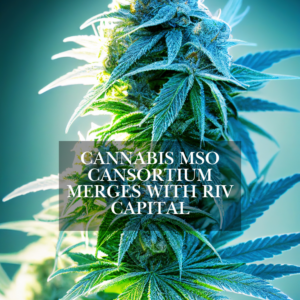Magic Mushroom Strains: Do They Really Differ?

Recent Studies Suggest Magic Mushroom Strains May Not Be So Different in Potency
The ongoing debate over the effects of various psilocybin mushroom strains has long divided both growers and users. Varieties of Psilocybe cubensis—such as Golden Teacher, B+, and Z-strain—are often said to have distinct psychedelic effects, resulting in numerous online discussions and confusion for those new to magic mushrooms who are trying to select the “best” strain. However, recent research, including reports from Double Blind, suggests that these strains may be more similar than different.
A Cube is a Cube: Dispelling Strain Myths
For years, the phrase “a cube is a cube” has circulated in online mushroom communities. It aims to downplay the idea that specific strains of Psilocybe cubensis offer unique psychedelic experiences. Instead, it emphasizes that most differences between strains are either superficial or greatly exaggerated. This view challenges the notion that one strain is inherently better suited for purposes like microdosing or intense trips, suggesting that much of the variation comes down to perception rather than reality.
The Science Behind Mushroom Strains
Psilocybin mushrooms fall under the genus Psilocybe, with Psilocybe cubensis being the most widely cultivated and popular species for both recreational and therapeutic use. Strains such as B+, Golden Teacher, and others are usually differentiated by traits like appearance, ease of growth, and purported effects. But according to recent genetic studies, including one led by Kevin McKernan, these distinctions are largely cosmetic.
McKernan’s study analyzed the genetics of 81 mushroom strains and found minimal differences between many strains, even when purchased from various vendors. In fact, some strains sold under different names were found to be genetically identical. This lack of genetic consistency across different suppliers highlights that the marketed differences between these strains are often exaggerated, if not entirely baseless.
Marketing vs. Science
Ian Bollinger, a scientist known for his work with Oakland Hyphae’s Hyphae Cup (a potency-testing competition), weighed in on the issue. “Strains are often little more than marketing labels,” Bollinger explained. “Potency has less to do with the strain itself and more to do with how the strain is cultivated, its genetics, and how it’s handled post-harvest.”
This statement underscores a key point in the debate: mushroom potency and effects are influenced more by external factors—such as cultivation techniques—than the specific strain being grown. Even with strains like Penis Envy, which is reputed to have a higher psilocybin content, potency can vary based on how well the mushroom was cultivated and preserved.
Cultivation Over Strain: The Real Determinant of Potency
The cultivation process plays a far more significant role in determining a magic mushroom’s potency and overall quality than its specific strain. Even in cases of genetically distinct varieties like Penis Envy, often celebrated for its potent effects, the real difference in potency often comes down to how the mushroom was grown, harvested, and handled. The Hyphae Cup’s data showed that while Penis Envy is commonly submitted for potency testing, the results frequently overlap with those of other strains.
This suggests that cultivation techniques—such as controlling light, temperature, humidity, and substrate—are more critical in producing potent mushrooms than the strain name itself. Over time, even strains like Golden Teacher and B+, which were originally named to denote specific characteristics, lose reliability due to genetic drift and inconsistent spore-sharing practices. As Bollinger points out, genetics may contribute to potency, but it’s only one part of a more complex picture that includes how mushrooms are grown.
The Future of Magic Mushroom Strains
A 2023 study comparing the genetic diversity of 86 cultivated strains and 38 wild strains from Australia raises even more questions about the impact of domestication on psilocybin mushrooms. Domesticated strains showed far less genetic diversity than their wild counterparts, suggesting that selective breeding may have weakened some strains by reducing their resistance to contamination and other environmental stresses.
As a result, modern cultivated strains might be weaker or less resilient than their wild equivalents. This has prompted some experts to suggest that mushroom growers should experiment with wild species like Psilocybe cyanescens, which are known for their higher potency and greater resistance to contamination. These species may offer exciting possibilities for both experienced growers and psychonauts seeking stronger, more reliable experiences.
A Shift in Focus: From Strains to Cultivation
Looking to the future, many experts agree that rather than fixating on finding the “best” strain, mushroom enthusiasts should instead focus on optimal cultivation techniques. Factors such as substrate quality, environmental conditions, and post-harvest handling are increasingly recognized as the primary determinants of a mushroom’s potency.
In light of this, newcomers to mushroom cultivation are often advised to choose a strain they find appealing, rather than getting bogged down by the hype surrounding specific varieties. “The real magic,” as Bollinger puts it, “is in how you grow and handle your mushrooms.”
Strain Selection May Be Overhyped
While strains like Golden Teacher and Penis Envy continue to enjoy popularity within mushroom communities, recent research suggests that these varieties may be more alike than previously thought. The science points to cultivation practices, genetic consistency, and post-harvest care as the true influencers of potency, rather than any inherent differences between strains.
In the end, the decision of which strain to grow or consume may come down to personal preference rather than scientific fact. Until further research sheds more light on the nuances of mushroom strains, one piece of advice remains clear: the way you grow your mushrooms matters far more than the name of the strain.











